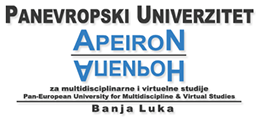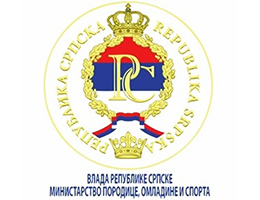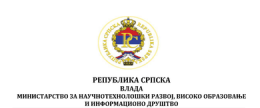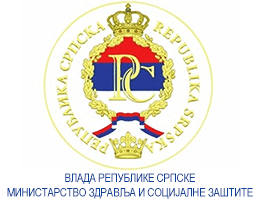Self-Efficacy of Pre-Service Teacher Professional on The Physical Education Learning Process in Inclusive Class: Is It Different from Regular Class?
Volume 14, Issue 2 (2024)
Volume 14, Issue 2 (2024)
Self-Efficacy of Pre-Service Teacher Professional on The Physical Education Learning Process in Inclusive Class: Is It Different from Regular Class?
Abstract:
Self-efficacy of physical education teachers is critical for maximizing learning in both regular and inclusive
classes. The purpose of this study is to determine the difference in pre-service professional students’ levels of self-efficacy
for physical education learning in regular and inclusive classes.
This is a comparative study employing a survey method. Purposive random sampling was used in this study. The sample
includes pre-service physical education students. The questionnaire was distributed to 120 respondents, but only 62 were
willing to complete it. The instrument employs a self-efficacy questionnaire in regular class and a self-efficacy questionnaire
in inclusive class. Each questionnaire contains 15 statement items with response options ranging from 1 to 4. Based on the
self-efficacy questionnaire in regular class, the Cronbach alpha score of 0.89 indicates that the questionnaire is reliable;
in inclusive class, the same questionnaire yields a 0.92 Cronbach alpha value.
The Paired T Test is used to analyze the data, and the resultant sig value is 0.00. This score can be regarded as indicating
a significant difference in pre-service students’ self-efficacy in regular class physical education learning versus inclusive
class physical education learning. Descriptively, the mean degree of self-efficacy in the regular class is 49.37, while in the
inclusive class it is 44.03.
These findings show that compared to regular class, inclusive class have a mean self-efficacy level that is lower. Policymakers
may want to take these findings into account when deciding what additional resources to offer pre-service students so
they may benefit from inclusive class.
Keywords:
Self-Efficacy, Pre-Service, Teacher, Physical Education, Inclusive Class
Full Text:
References:
Aiken, L. R. (1985). Educational and Psychological Measurement. PEARSON.
Aldosari, M. S. (2022). Perceptions of Saudi Arabian school teachers in private general education schools toward the inclusion of students with
disabilities. Research in Developmental Disabilities, 130, 2022. https://doi.org/10.1016/j.ridd.2022.104342
An, S., & Tao, S. (2024). English as a foreign language teachers’ burnout: The predicator powers of self-efficacy and well-being. Acta Psychologica,
245(January), 104226. https://doi.org/10.1016/j.actpsy.2024.104226
Arifa, F. N., & Prayitno, U. S. (2019). Peningkatan Kualitas Pendidikan: Program Pendidikan Profesi Guru Prajabatan dalam Pemenuhan
Kebutuhan Guru Profesional di Indonesia. Aspirasi: Jurnal Masalah-Masalah Sosial, 10(1), 1–17. https://doi.org/10.46807/aspirasi.
v10i1.1229
Avramidis, E., & Kalyva, E. (2007). The influence of teaching experience and professional development on Greek teachers’ attitudes towards
inclusion. European Journal of Special Needs Education, 22(4), 367–389. https://doi.org/10.1080/08856250701649989
Baek, C., Aguilar, S. J., & Warschauer, M. (2024). Exploring teachers’ self-efficacy and willingness to provide accommodations in teaching students with autism: An intervention study. Teaching and Teacher Education, 140(December 2023), 104488. https://doi.org/10.1016/j.
tate.2024.104488
Bandura, A. (1997). Self-efficacy: The exercise of control. Freeman and Company.
Bari, S., Harun, M. T., Mohd Yasin, M. H., & Salamuddin, N. (2011). Readiness of Malaysian ’ S Schools for Special Needs in. International
Journal of Arts & Sciences, 4(11), 269–274.
Beamer, J. A., & Yun, J. (2014). Physical educators’ beliefs and self-reported behaviors toward including students with autism spectrum disorder.
Adapted Physical Activity Quarterly, 31(4), 362–376. https://doi.org/10.1123/apaq.2014-0134
Braksiek, M. (2022). Pre-service physical education teachers’ attitude toward, and self-efficacy in, inclusive physical education. Teaching and
Teacher Education, 109(103547), 2003–2005.
Campos, M. J., Ferreira, J. P., & Block, M. E. (2013). an Analysis Into the Structure, Validity and Reliability of the Children’S Attitudes
Towards Integrated Physical Education-Revised (Caipe-R). European Journal of Adapted Physical Activity, 6(2), 29–37. https://doi.
org/10.5507/euj.2013.008
Chen, J., Lin, C., & Lin, F. (2024). The interplay among EFL teachers’ emotional intelligence and self-efficacy and burnout. Acta Psychologica,
248(March), 104364. https://doi.org/10.1016/j.actpsy.2024.104364
Cipkin, G., & Rizza, F. T. (2003). The Attitude of Teachers on Inclusion. Journal of Education.
das Neves Salles, W., Folle, A., Farias, G. O., & do Nascimento, J. V. (2020). Teaching self-efficacy and factors associated with the teaching
practice of physical education faculty. Journal of Physical Education (Maringa), 31(1), 1–12. https://doi.org/10.4025/JPHYSEDUC.
V31I1.3116
Fitriatun, E. (2016). Pengaruh Self-Efficacy Dengan Sikap Guru Terhadap Inklusi. Jurnal Pendidikan Mandala, 1, 32–35.
Friesen, D. C., Shory, U., & Lamoureux, C. (2023). The role of self-efficacy beliefs and inclusive education beliefs on teacher burnout. Social
Sciences and Humanities Open, 8(1), 100599. https://doi.org/10.1016/j.ssaho.2023.100599
Gani, I., Purwanto, S., & Wibowo, Y. A. (2023). Implementation of Inclusive Physical Education in Yog- yakarta Senior High Schools : Teacher
Experience (Issue 1). Atlantis Press International BV. https://doi.org/10.2991/978-94-6463-356-6
Haegele, J. A., & Sutherland, S. (2015). Perspectives of Students with Disabilities Toward Physical Education: A Qualitative Inquiry Review.
Quest, 67(3), 255–273. https://doi.org/10.1080/00336297.2015.1050118
Haycock, D., & Smith, A. (2010). Inclusive physical education? A study of the management of national curriculum physical education and unplanned
outcomes in England. British Journal of Sociology of Education, 31(3), 291–305. https://doi.org/10.1080/01425691003700532
Healy, S., Judge, J. P., Block, M. E., & Kwon, E. H. (2016). Preparing Adapted Physical Educators to Teach Students With Autism: Current
Practices and Future Directions. The Physical Educator, 73(1). https://doi.org/10.18666/tpe-2016-v73-i1-6082
Hendryadi, H. (2017). VALIDITAS ISI: TAHAP AWAL PENGEMBANGAN KUESIONER. Jurnal Riset Manajemen Dan Bisnis (JRMB)
Fakultas Ekonomi UNIAT, 2(2). https://doi.org/10.36226/jrmb.v2i2.47
Hodge, S., Ammahb, J. O. A., Casebolt, K. M., LaMaster, K., Hersman, B., Samalot-Rivera, A., & Sato, T. (2009). A diversity of voices: Physical
education teachers’ beliefs about inclusion and teaching students with disabilities. International Journal of Disability, Development
and Education, 56(4), 401–419. https://doi.org/10.1080/10349120903306756
Hutchinson, N. L., & Specht, J. A. (2019). Inclusion of learners with exceptionalities in Canadian schools : A practical handbook for teachers
(6th ed.). Pearson.
Hutzler, Y., Meier, S., Reuker, S., & Zitomer, M. (2019). Attitudes and self-efficacy of physical education teachers toward inclusion of children
with disabilities: a narrative review of international literature. Physical Education and Sport Pedagogy, 24(3), 249–266. https://doi.or
g/10.1080/17408989.2019.1571183
Intifadha, R. N., & Tuasikal, A. R. S. (2017). Survei Proses Pembelajaran Guru Pendidikan Jasmani Olahraga Dan Kesehatan Di Sekolah
Inklusi (studi pada sekolah dasar inklusi se-kecamatan Gubeng kota Surabaya). Jurnal Pendidikan Olahraga Dan Kesehatan, 5(2), 3.
Jamil, N. A. (2018). Differences in Student Self-Efficacy by Gender. Educare: International Journal for Edcatioanl Studies, 11(1), 17–28.
Jovanović, L., Kudláček, M., Block, M. E., & Djordjević, I. (2014). Self-Efficacy of Pre-Service Physical Education Teacher Toward Teaching
Students With Disabilities in General Physical Education Classes in Serbia. European Journal of Adapted Physical Activity, 7(2),
Kevin, J. (2020). Relation between Self-Esteem and Self-Efficacy in Undergraduate Female College Students. International Journal for Research
in Applied Science and Engineering Technology, 8(4), 578–580. https://doi.org/10.22214/ijraset.2020.4094
Kwon, E. H., & Block, M. E. (2017). Implementing the adapted physical education E-learning program into physical education teacher education
program. Research in Developmental Disabilities, 69(May), 18–29. https://doi.org/10.1016/j.ridd.2017.07.001
Lauermann, F., & Berger, J. L. (2021). Linking teacher self-efficacy and responsibility with teachers’ self-reported and student-reported motivating
styles and student engagement. Learning and Instruction, 76(August), 101441. https://doi.org/10.1016/j.learninstruc.2020.101441
Mrug, S., & Wallander, J. L. (2002). Self-Concept of Young People with Physical Disabilities: Does integration play a role? International
Journal of Phytoremediation, 21(1), 267–280. https://doi.org/10.1080/1034912022000007289
Nanayakkara, S. (2022). Teaching inclusive physical education for students with disabilities: reinvigorating in-service teacher education in Sri
Lanka. Sport, Education and Society, 27(2), 210–223. https://doi.org/10.1080/13573322.2021.1964462
Overton, H., Wrench, A., & Garrett, R. (2017). Pedagogies for inclusion of junior primary students with disabilities in PE. Physical Education
and Sport Pedagogy, 22(4), 414–426. https://doi.org/10.1080/17408989.2016.1176134
Pinkerton, D, S., & Cecil, H. (2000). Magnitude: An important dimension of self-efficacy. Journal of Applied Social Psychology, 30(6),
1243–1267.
Putri, F. A. R., & Fakhruddiana, F. (2019). Self-efficacy guru kelas dalam membimbing siswa slow learner. JPK (Jurnal Pendidikan Khusus),
14(1), 1–8. https://doi.org/10.21831/jpk.v14i1.25161
Qi, J., Wang, L., & Ha, A. (2017). Perceptions of Hong Kong physical education teachers on the inclusion of students with disabilities. Asia
Pacific Journal of Education, 37(1), 86–102. https://doi.org/10.1080/02188791.2016.1169992
shahzad, khurram; Naureen, S. (2017). Impact of Teacher Self-Efficacy on Secondary School Students’ Academic Achievement. Journal of Education and Educational Development, 4(1), 48–72.
Shoji, K., Cieslak, R., Smoktunowicz, E., Rogala, A., Benight, C. C., & Luszczynska, A. (2016). Associations between job burnout and selfefficacy:
A meta-analysis. Anxiety, Stress and Coping, 29(4), 367–386. https://doi.org/10.1080/10615806.2015.1058369
Suryobroto, A. S., Setiawan, C., Nampai, U., & Marhaendro, A. S. D. (2022). A thematic analysis of teachers’ experience in inclusive physical
education teaching. Cakrawala Pendidikan, 41(3), 754–763. https://doi.org/10.21831/cp.v41i3.50531
Vieira, L., Rohmer, O., Jury, M., Desombre, C., Delaval, M., Doignon-Camus, N., Chaillou, A. C., Goulet, C., & Popa-Roch, M. (2024). Attitudes
and self-efficacy as buffers against burnout in inclusive settings: Impact of a training programme in pre-service teachers. Teaching
and Teacher Education, 144(March). https://doi.org/10.1016/j.tate.2024.104569
Voulgaraki, E., Kaprinis, S., & Antonopoulou, P. (2023). the Influence of Emotional Intelligence in Physical Education Teachers’ Self-Efficacy
for the Inclusion of Students With Disabilities. European Journal of Special Education Research, 9(1), 17–35. https://doi.org/10.46827/
ejse.v9i1.4650
Wray, E., Sharma, U., & Subban, P. (2022). Factors influencing teacher self-efficacy for inclusive education: A systematic literature review.
Teaching and Teacher Educatio, 117. https://doi.org/https://doi.org/10.1016/j.tate.2022.103800
Zhang, Y., Tsang, K. K., Wang, L., & Liu, D. (2022). Emotional Labor Mediates the Relationship between Clan Culture and Teacher Burnout:
An Examination on Gender Difference. Sustainability (Switzerland), 14(4). https://doi.org/10.3390/su14042260






